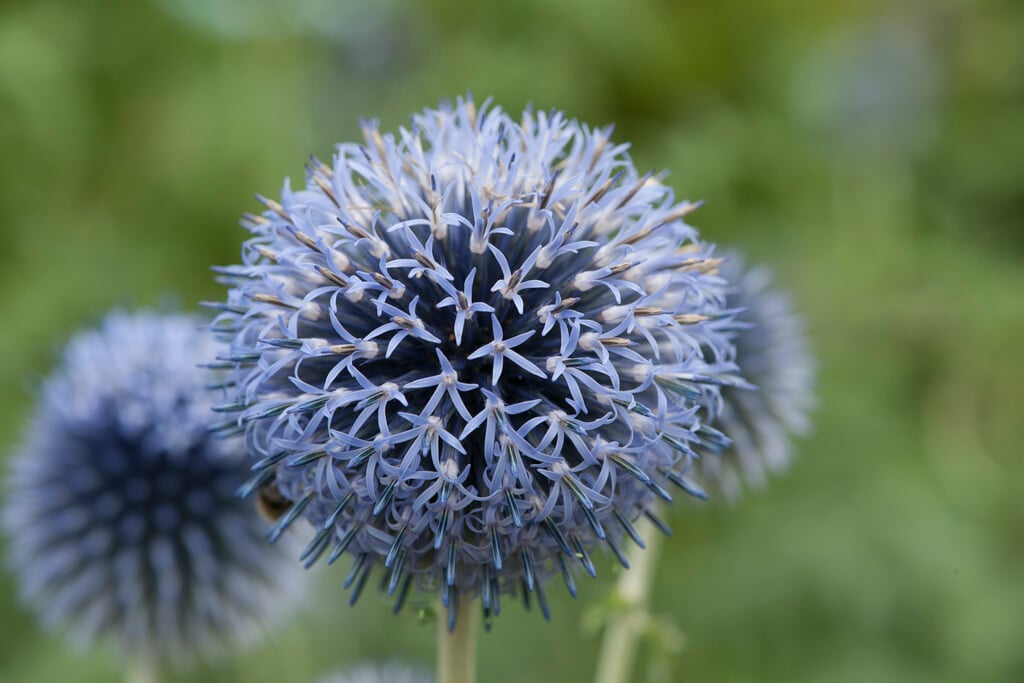Echinops bannaticus
blue globe thistle
A clump-forming perennial with upright, grey, woolly stems and spiny, hairy, grey-green divided leaves. Spherical blue-grey to blue flowerheads, up to 5cm across, are produced in mid- and late summer
Size
Ultimate height
1–1.5 metresTime to ultimate height
2–5 yearsUltimate spread
0.5–1 metresGrowing conditions
Moisture
Moist but well–drained, Well–drainedpH
Acid, Alkaline, NeutralColour & scent
| Stem | Flower | Foliage | Fruit | |
| Spring | Grey Silver Green | |||
|---|---|---|---|---|
| Summer | Grey Silver | Grey Silver Blue | Grey Silver Green | |
| Autumn | Grey Silver Green | |||
| Winter |
Position
- Full sun
- Partial shade
Aspect
South–facing or West–facing or East–facing
Exposure
Exposed or ShelteredDrought resistance
Yes Hardiness
H7Botanical details
- Family
- Asteraceae
- Native to GB / Ireland
- No
- Foliage
- Deciduous
- Habit
- Clump forming
- Genus
Echinops can be annuals, biennials or perennials with simple or pinnately lobed, spiny leaves and spherical blue or whitish flower-heads
- Name status
Correct
- Plant range
- Europe
How to grow
Cultivation
Best grown in poor, well-drained soil in full sun but will tolerate most soils in full sun or partial shade
Propagation
Propagate by seed sown in seed bed in mid spring. Propagate by division in spring or autumn or by root cuttings in winter
Suggested planting locations and garden types
- Coastal
- Cottage and informal garden
- Gravel garden
- Wildlife gardens
- Cut flowers
- Flower borders and beds
Pruning
Deadhead to prevent self-seeding
Pests
May be susceptible to aphids
Diseases
Generally disease-free
Get involved
The Royal Horticultural Society is the UK’s leading gardening charity. We aim to enrich everyone’s life through plants, and make the UK a greener and more beautiful place.
